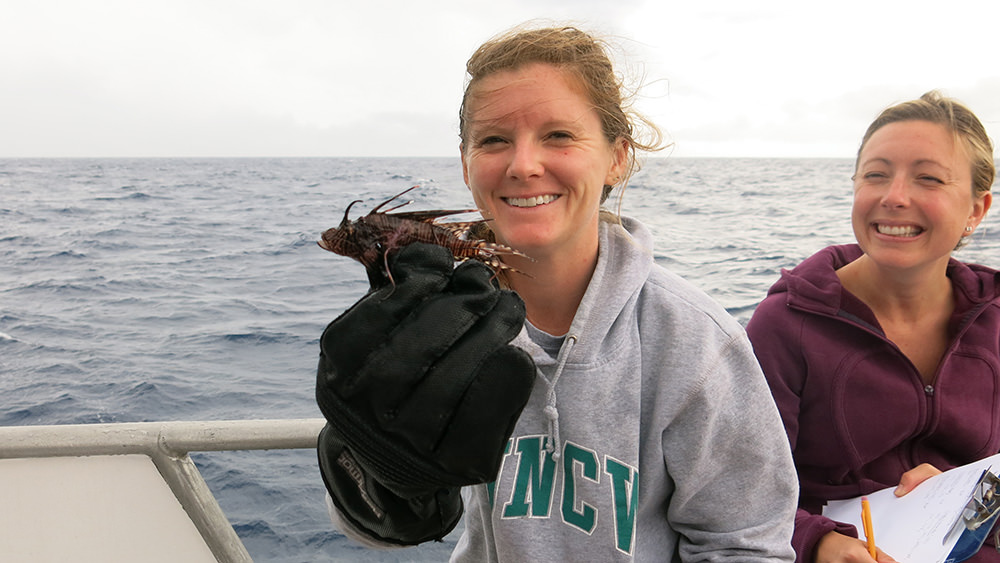
2026 Lionfish Invitational
There are three trips planned this year.
June 21-25, 2026 (Sunday to Thursday)
July 26-30, 2026 (Sunday to Thursday)
September 6-10, 2026 (Sunday to Thursday)
The application period opens on December 1, 2025. Visit LionfishInvitational.com for more information.
Alternative to Derbies
In recent years, lionfish derbies have served to raise awareness of the invasive lionfish problem and remove large quantities of lionfish throughout the tropical western Atlantic (southeastern United States, Caribbean, Gulf). Unfortunately, this type of one-day dive/snorkel event is not practical for Flower Garden Banks National Marine Sanctuary due to the remote location and the depth of our reefs.
As an alternative, we started a program called the Lionfish Invitational. This multi-day event is a science-based research expedition in which 11 dive teams work to remove as many lionfish as possible, while also recording helpful data on lionfish activity and sightings. In addition, a science team of 8 divers conducts surveys to determine what species, quantities and sizes of fish are present at each designated site before and after the removals.

The first Lionfish Invitational was held in 2015 and we have attempted to hold at least one invitational a year since then. Unfortunately, weather, mechanical difficulties, and a pandemic have sometimes prevented that.
Lionfish Removals
Although spear fishing in the sanctuary is illegal, specific collection permits are issued by the sanctuary for this event since pole spears are the most effective means of capturing lionfish.

Before the trip begins, participants are also trained to protect both the reef and themselves when spearing lionfish.

Lionfish Data
After each removal dive, the ZooKeepers are emptied into baskets for tallying.


One by one, each lionfish is measured, bagged and tagged before heading to the freezer.

Each batch of lionfish is labeled to account for where and when the fish were captured and by which group.

The largest lionfish caught during a Lionfish Invitational was 431mm (17 inches) and the smallest was 30mm (1 inch).

A running total is kept of all the removals, identifying how many were sighted and removed by each group, along with maximum and minimum sizes. Each year, as divers become more experienced and get to know the sanctuary better, the number of lionfish removals usually increases.

At a later date, these lionfish are dissected and evaluated for gut contents, genetics and age. This information helps us better understand the effects of invasive lionfish on native fish communities and habitats in the sanctuary.
Trip Questions? contact lionfishinvitational@gmail.com
Research Questions? Contact Michelle.A.Johnston@noaa.gov

